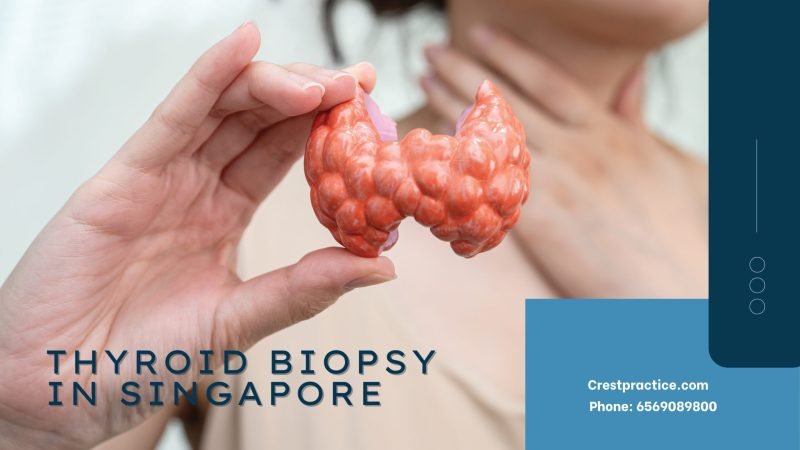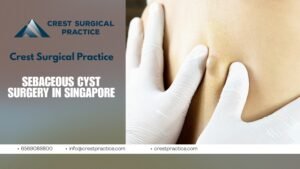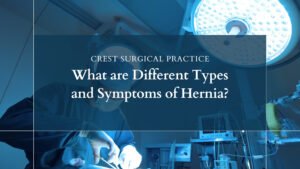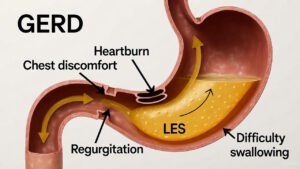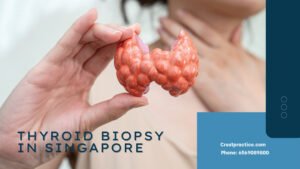The thyroid gland regulates metabolism, energy, and overall health. When a thyroid nodule or abnormality is identified, determining the nature of the problem can be essential. This is where a thyroid biopsy often comes in handy.
Whether your doctor has recommended a thyroid biopsy or you’re wondering whether one is necessary, understanding the indications, procedure, and implications can help you make informed decisions about your health.
What Signs or Risk Factors Indicate a Thyroid Biopsy?
A thyroid biopsy is recommended when there are signs or risk factors that raise suspicion of a potentially harmful thyroid condition, especially thyroid cancer. The common indicators include:
- Presence of Thyroid Nodules – Thyroid nodules are lumps in the thyroid gland and are common. Most of the nodules are benign, but some require investigation.
- Nodule Characteristics on Ultrasound – Ultrasound imaging can evaluate nodules for features like size (usually over 1 cm), irregular margins, microcalcifications, or increased blood flow. These conditions may suggest malignancy.
- Rapid Growth or Changes – Nodules that grow quickly, change texture, or cause symptoms like difficulty swallowing or voice changes should be evaluated further evaluation.
- Personal or Family History – A history of thyroid cancer, radiation exposure to the head or neck, or genetic predisposition can increase the need for biopsy.
- Abnormal Thyroid Function Tests – Although biopsy decisions are based on imaging and physical exam, abnormal thyroid hormone levels can guide testing strategies.
Your doctor will assess these factors to decide whether a biopsy is necessary. Their main aim is to rule out cancer early or diagnose other conditions requiring specific treatment.
How Is a Thyroid Biopsy Conducted and What Should Patients Expect?
The most common thyroid biopsy type is a fine needle aspiration (FNA) biopsy. Please check out what you can expect during the procedure:
- Preparation – No special preparation is usually needed, as you can eat and drink as normal unless otherwise instructed.
- Positioning – You need to lie down with your neck slightly extended to expose the thyroid area.
- Ultrasound Guidance – The doctor uses ultrasound imaging to locate the nodule accurately, needing a biopsy.
- Biopsy Procedure – A thin, hollow needle is inserted into the thyroid nodule to withdraw a small sample of cells. It may be done once or multiple times during the session to get enough tissue.
- Minimal Discomfort – Most patients feel only slight pressure or a pinch during the procedure. Local anesthesia is usually not needed, but can be offered if required.
- Duration and Aftercare – The biopsy usually takes 10-20 minutes. After the procedure, you may have mild soreness or a small bruise, but serious complications are rare.
The minimally invasive nature of FNA can make it a safe and effective diagnostic tool.
How Are Thyroid Biopsy Results Interpreted, and What Do They Mean for Treatment?
Thyroid biopsy results usually come back within a few days to a week and are divided into five categories:
- Benign – Most biopsies show benign findings, indicating no cancer. In this case, monitoring or routine follow-up ultrasounds might be recommended.
- Malignant: If cancer cells are detected, your doctor will discuss treatment options that could include surgery, radioactive iodine therapy, or other targeted therapies, depending on the type and stage.
- Suspicious or Indeterminate – Sometimes results are unclear, which means further testing, repeat biopsy, or surgery which may be advised to clarify the diagnosis.
- Non-Diagnostic – Occasionally, the sample is insufficient for a diagnosis, which requires a repeat biopsy.
- Other Findings – Inflammatory or other rare conditions might be identified, guiding specific treatments.
Final Consideration
If you suspect thyroid issues or have been advised to consider a thyroid biopsy in Singapore, consult the Crest Surgical Practice for a perfectly tailored evaluation and care plan.

